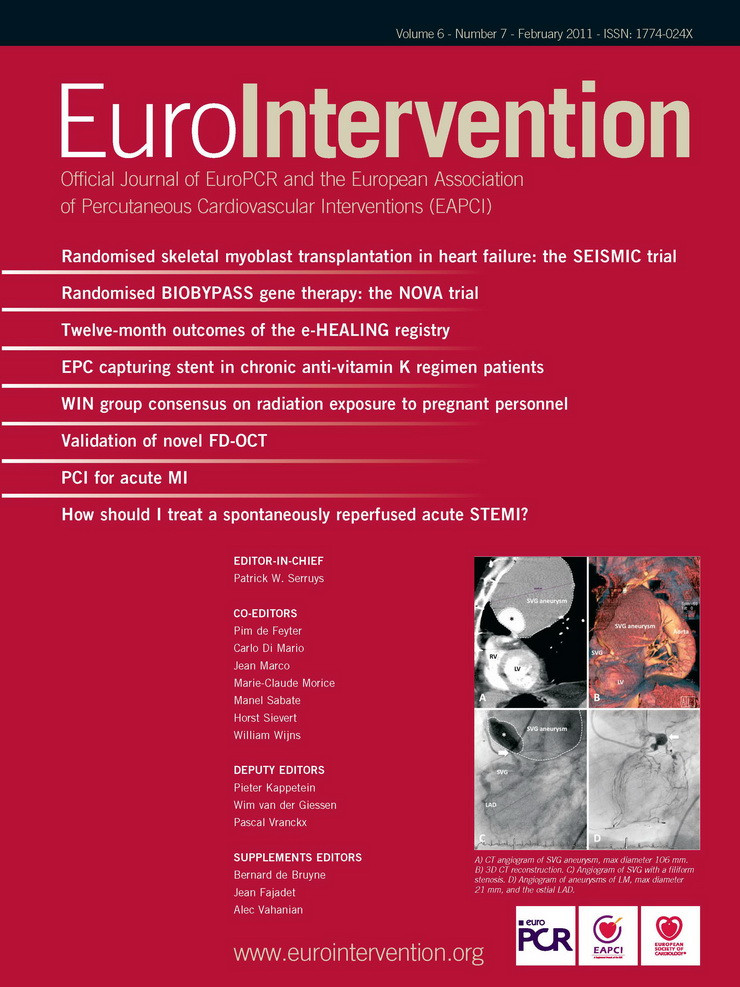In the last 50 years surgery of the thoracic aorta has become an essential element of cardiovascular surgery. Through small or big improvements, through spectacular breakthroughs or slow evolution, aortic surgery seemed to have reached its maturity during the nineties and its benefits were not challenged.
Apparently, we were living in a dream.
However, about 15 years ago the idea of treating aortic lesions by means of endoluminal methods arrived; and so, since the first publications by Dake and Miller in 1994, thoracic aortic diseases are increasingly treated by the placement of endoprostheses through a peripheral approach.
At the beginning this expansion of thoracic endovascular aortic repair (TEVAR) has been fed by the impossibilities and failures of conventional surgery.
Some patients are, indeed, too old or have too severe comorbidities to be operated on. Besides, the results of conventional surgery are disappointing in a certain number of pathological conditions. This is the case, for instance, of complicated type B dissections and of ruptured aneurysms; of intramural haematomas and penetrating atheromatous ulcers in aged patients; of those patients who, because of extended or recurring aortic lesions, have to undergo repeated surgical procedures, each time riskier. Undoubtedly, TEVAR has appeared as a major progress in all those pathological conditions and we have applauded.
But this was not enough. Some people have thought (and still think) that the morbidity often associated with conventional procedures would be dramatically reduced and that, thanks to TEVAR, bleeding, low cardiac outputs, renal and pulmonary failures, neurological accidents and, eventually, hospital mortality would disappear.
So, TEVAR became omnipresent, disputing conventional surgery and challenging not only its past hegemony but also its very existence.
However, any new technique faces a simple but irreducible principle: to compel recognition it needs to allow us to accomplish something that was not possible to do, or to do better what was not being done properly.
Is this the case of TEVAR?
Randomised controlled studies are very rare. Their analysis shows that, indeed, for comparable lesions and clinical conditions, TEVAR reduces the immediate complications, but that the neurologic morbidity and the hospital mortality rates are the same as the ones for conventional surgery. It is unlikely that TEVAR can presently dispute open surgery, which allows obtaining, on average, a 1% mortality rate in elective surgery of the aortic root and ascending aorta, a 5% mortality rate in the replacement of the aortic arch and the descending aorta, a slightly higher rate of mortality in the replacement of the thoraco-abdominal aorta, whereas the rate of neurologic accidents, all types and locations included, remains below 10% in many reported experiences.
Moreover, in the mid- or long-term, we can observe with TEVAR the occurrence of a high enough rate of specific complications, all of which require a fair number of redo procedures. Not to mention the fact that the very long-term behaviour of these devices is totally unknown and remains a matter of concern.
In addition, TEVAR does not allow treating all aortic lesions. It is almost totally excluded from the treatment of the diseases of the proximal aorta. It requires precise anatomical features. It cannot be used on aortic segments from which important tributaries originate without any other form of surgical procedure.
Let’s consider the example of the “hybrid” techniques of “debranching” that we see more and more performed on the aortic arch. Patients who are supposed to be in too bad a condition to undergo conventional surgery have to undergo a median sternotomy, a side bite cross clamping of the ascending aorta (which is probably one of the most dangerous manoeuvres and highest stroke providers in aortic surgery), the implantation of a vascular prosthesis before the sequential interruption and re-implantation of the brachiocephalic vessels and, ultimately, the placement in the arch of an endoprosthesis. Is such a procedure really less invasive, more appropriate, and safer than a straightforward conventional replacement of the aortic arch?
Lastly, how not to allude to the inevitable and determining question of the cost of these techniques?
Nevertheless, a very resourceful, inventive and active cardiologic, radiologic and biotechnological environment is presently challenging conventional aortic surgery and it is useless to weep over the past or to protest against the present.
The endovascular techniques are here and well established –and they will improve. We can, indeed, observe the beginning of innovative attempts at using customised, fenestrated prostheses with collateral branches allowing the treatment of complex or poorly placed lesions. Of course, these experiences are scarce and still pertain to clinical research, but it is easy to imagine that, thanks to new computerised, robotised and rapid imaging tools, these techniques, which are still in infancy, will improve and finally find their rightful place. So, perhaps, the treatment of aortic diseases in the next decades will not be performed by operators highly skilled in the use of scissors, needle holders and forceps and unfailingly faithful to the cardio-pulmonary bypass, but by “hybrid” therapists, trained in techniques of the “cathlab”, interventional methods and video assisted surgery.
This, however, is the future. For the moment we have to be cautious and avoid any kind of fundamentalism, either surgical or interventional. TEVAR can be very useful; but, so far, it must be reserved to patients not amenable to open surgery. Systematically crossing that line would probably lead to great disappointments.

